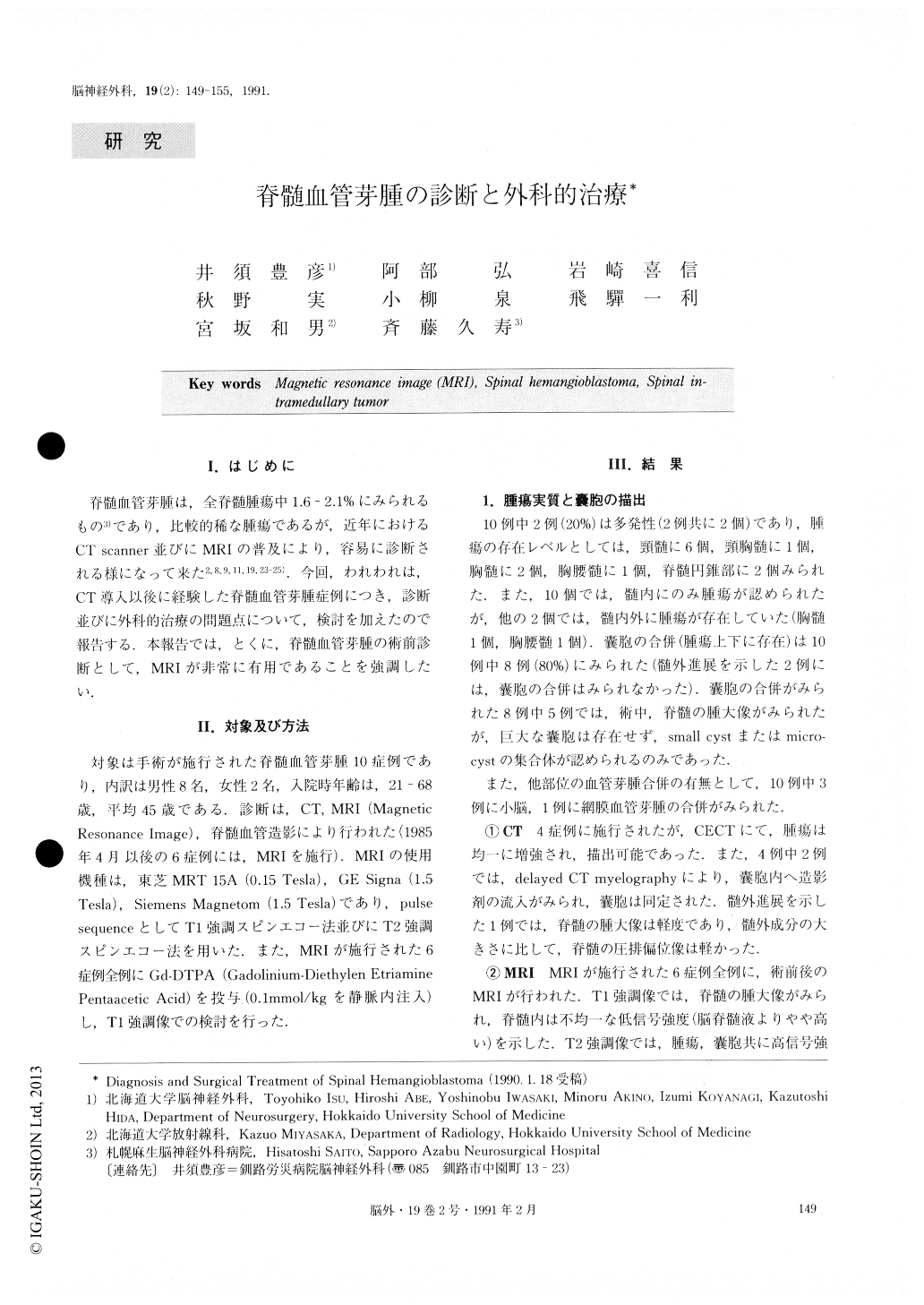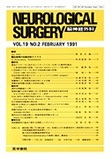Japanese
English
- 有料閲覧
- Abstract 文献概要
- 1ページ目 Look Inside
I.はじめに
脊髄血管芽腫は,全脊髄腫瘍中1.6-2.1%にみられるもの3)であり,比較的稀な腫瘍であるが,近年におけるCTscanner並びにMRIの普及により,容易に診断される様になって来た2,8,9,11,19,23-25).今回,われわれは,CT導入以後に経験した脊髄血管芽腫症例につき,診断並びに外科的治療の問題点について,検討を加えたので報告する.本報告では,とくに,脊髄血管芽腫の術前診断として,MRIが非常に有用であることを強調したい.
Abstract
Spinal hemangioblastoma is a rare tumor. Its inci-dence varies from 1.6 to 2.1% of primary spinal cord tumors. In this report, the authors described MRI (Magnetic Resonance Imaging) of spinal hemangioblas-toma and its surgical results.
<Materials and Methods>
This series included 10 spinal hemangioblastomas studied with CT or MRI. There were 8 men and 2 women. The age ranged from 21 to 68 years, with a mean age of 45 years. 6 patients were preoperatively and postoperatively studied with a resistive 0.15 T sys-tem (Toshiba MRT 15A) or a superconductive 1.5 T system (GE Signa or Siemens Magnetom) . The lesions were single in 8 out of 10 patients and multiple in 2. 10 spinal hemangioblastomas were located in intramedul-lary space and 2 in both intramedullary and ex-tramedullary space. 8 out of 10 patients (80%) were associated with cyst.
<Results>
① MRI
In TI-weighted MR images after administration of Gd-DTPA, the solid component of the tumor enhanced brilliantly. The enhanced lesions contained serpiginous areas of signal void, reflecting vascular structures in 5 out of 6 cases. The intrinsic spinal cord signal was heterogenous with low intensity areas representing the associated cyst. The cyst appeared either isointensive to cerebrospinal fluid (CSF) or hyperintense relative to CSF and slightly hypointense relative to the spinal cord. The precise delineation of the tumor was impossi-ble without enhancement. Noncontrast T1-weighted MR images displayed diffuse widening of the spinal cord. On T2-weighted MR images, all regions of the spinal cord enlargement increased in signal.
② Postoperative results
All 10 cases of spinal hemangioblastomas were total-ly removed with good postoperative results and theassociated cysts were drainaged. The postoperative MRI showed the disappearance of the tumor and signi-ficant reduction in the size of the cyst.
<Conclusion>
① Gd-DTPA enhanced MRI was useful in defining and outlining the solid component of spinal hemangioblas-toma.
② The complete removal of the tumor with only drain-age of the cyst was possible with good postoperative results.

Copyright © 1991, Igaku-Shoin Ltd. All rights reserved.


